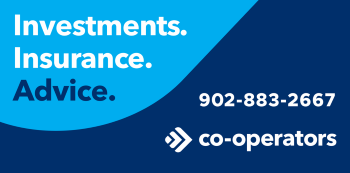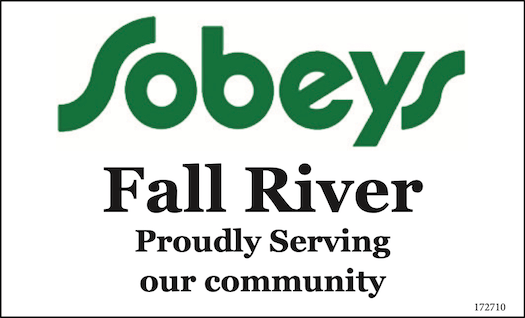This is a Question and Answer between The Laker News and Develop Nova Scotia,
EAST HANTS/WAVERLEY: Develop Nova Scotia is leading the Internet For Nova Scotia Initiative on behalf of the province to bring high speed Internet to 95% and as close to 100% of Nova Scotian homes and businesses as possible.
Work is underway in a number of communities with the next round of project announcements expected this month.
We know our readers have questions. Here some q&a’s for more information.
Q. Are there currently any Internet for Nova Scotia Initiative projects underway in The Laker’s readership area of East Hants, Stewiacke, Musquodoboit Valley, Waverley to Oakfield and Beaver Bank?
As part of the first round of Internet projects announced in February 2020, there are projects underway in East Hants which include Elmsdale, Kennetcook, Noel, Prospect Road, and Walton. These are fibre to the home projects through Bell Canada and will provide access to connections for approximately 2100 homes and businesses.
The Municipality of East Hants has general coverage maps and estimated completion dates for these projects from Bell Canada on their web site. https://www.easthants.ca/business/internet-for-nova-scotia-initiative/
As the project area nears completion, the Internet Service Provider will share the civic addresses of the homes and businesses being serviced. At that time, maps will be updated there to reflect this information.
Develop Nova Scotia is also working on a microsite that will include these types of information, as available, for projects across the province. Some first round projects including Elmsdale were accelerated with an additional provincial investment announced in March due to COVID-19.
Q. How do I know work is underway? I haven’t seen any activity.
Having access to a connection is the final step in the process. So even if you don’t see work going on in your community, that doesn’t mean it hasn’t started.
As providers work in a community, they will be able to provide more information to the public around coverage areas and estimated project timelines. Providers will share more detailed information with Develop Nova Scotia and municipal partners as it becomes available.
As projects near completion, providers will also be reaching out to communities in those areas to outline services, plans available etc.
Q. What happens when a project is awarded?
Once a project is awarded, there is work that needs to be done by the providers on the ground to refine specific locations that will be covered. Timing may vary as each community has different existing infrastructure and there is a significant amount of preparatory work required, including pole inspection/replacement for hundreds of kms of pole lines, permitting, approvals to cross water lots, and much more.
Q. I’m not in round 1. What next?
Develop Nova Scotia closed their second Request for Proposals (RFP) on June 5 to work to cover as many remaining underserved/unserved areas as possible across the province. There are 15 pre-qualified providers that are eligible to respond to all RFPs including the one that closed recently and any future ones to continue to work to provide access to unserved or underserved areas.
No announcements have been made yet related to round 2. Develop Nova Scotia has been evaluating submissions from this second call and are in negotiations. They expect to start making project announcements this month (August) related to approved projects, where those are, providers, and the technology involved.
For any areas not part of the approved projects in round 2, they will quickly be looking at next steps to work to provide access to connections to as close to 100% of homes and businesses as possible.
Q. What speeds should I expect with approved projects?
All projects approved for funding by the arms-length Nova Scotia Internet Trust Fund will provide at least minimum speeds required by the Canadian Radio-television and Telecommunications Commission (CRTC) (50 Mbps down/10 Mbps up for Wired | 25 Mbps down/5 Mbps up for Wireless, with a demonstrated plan to reach 50 Mbps).
Speeds are delivered through a variety of technologies, including fibre/coaxial, signal off tower, or satellite. With these minimum speeds you’ll be able to stream music, download large files, stream high-speed definition video, do video calls, and play online games. Projects that aren’t able to achieve these minimums are not recommended to the Trust for funding.
Q. How does this project help ensure I will get high speed access? We talked to a provider in our area and they indicated costs to us would be substantial?
This initiative helps bridge the gaps with respect to pre-qualified Internet Service Providers’ business cases. Working together and leveraging other funds where possible helps ensure coverage to as many unserved/underserved homes and businesses as possible.
Q. Why are you going through a formal process and don’t just give money to providers if they already have infrastructure in place near my home/business/community?
Develop Nova Scotia works through a competitive procurement process which is important. It ensures fairness, transparency in how proposals are evaluated, and informed decision-making. It encourages both large and small organizations, of many different types, to participate – illustrated by the funded projects announced in February which will see access to connections provided for more than 42,000 homes and businesses.
It is because of the integrity of this process that good recommendations can be made to the arms-length Trust for the investment of significant public funds. Develop Nova Scotia also work to leverage funds from the Internet Service Providers and other partners.
Error, group does not exist! Check your syntax! (ID: 9)Q. What efforts are underway to help support people during COVID-19?
Develop Nova Scotia is working with providers and looking at projects with an aim to go faster. There are some acceleration efforts happening for first round projects including Elmsdale thanks to the additional provincial investment of $15M and they will continue to look at options.
They are looking at all projects to work to eliminate red tape, speed-up regulatory approvals and ensure better coordination among all of the people working to bring service to homes and businesses. They continue to work with them to ease congestion on existing services to enhance the quality of Internet connections, where possible. This will help Nova Scotians working differently and from home during COVID-19, while still staying connected to friends and family.
Q. What happens to the remainder of this additional $15M indicated for potential accelerated projects?
Develop Nova Scotia will continue to work with Internet service partners to look at every project to see if acceleration is possible. Any remaining funds will be part of the Nova Scotia Internet Trust for future projects.
Q. Are there agreements in place with the providers?
Develop Nova Scotia negotiates agreements and manages the contracts and multi-
year service level agreements moving forward. These ensure accountability for service and quality standards, a competitive pricing structure, and ongoing maintenance and investment in the network.
Q. How do you monitor progress and ensure accountability with these agreements?
The Service Level Agreements signed with Develop Nova Scotia include provisions that require regular quality and service reporting, and allow them to inspect and audit the network installation. This is done in a number of ways. They have regular meetings with partners to review and check progress against their objectives. They are also able to check on equipment and installation progress through pictures and video, and, when it is safe to do so, through in-person inspections by an experienced network engineer.
Q. What about affordability of service? Are there data caps with any of the approved projects?
Included in the Service Level Agreements with providers are provisions to ensure cost competitiveness. Comparable Internet services must be cost competitive with those already available, regardless of where they are offered.
In terms of data caps, this is something that is regulated federally by the Canadian Radio-television and Telecommunications Commission (CRTC). However in order for a service to be cost competitive between markets, what you receive as part of that service must be comparable. If one service has a data cap, and the other does not, the services are not comparable.
Q. I am having issues with my current Internet provider? What are my options?
In terms of your current provider and issues you are having, if you are not able to resolve directly you can reach out to the Federal government who regulates Internet Service Providers and sets the minimum speeds. Some contacts for your reference.
- Contact Public Interest Advocacy Centre – consumer-advocacy group based in Ottawa that specializes in Canadian telecommunications. Can provide information regarding contracts & pricing issues (piac@piac.ca or 1-613-562-4002)
- Contact Canadian Commission for Complaints, independent agency that works with consumers & telecommunications companies to resolve customer complaints
(1-888-221-1687 or at www.ccts-cprst.ca)
- Contact Canadian Radio-television and Telecommunications Commission (CRTC), which is developing mandatory Code of Conduct for Internet Service Providers & are seeking feedback from customers who may have experienced issues related to contract clarity, bill shock, & cancelling or changing service providers, among others
(1-877-249-2782 or https://crtc.gc.ca/eng/contact)
Q. What kind of protection is in place for us regarding Internet?
The Federal government’s Internet Code protects Canadians who subscribe to Internet services.
The Canadian Radio-television and Telecommunications Commission (CRTC) created the code so that customers of Internet services are better informed of their rights and responsibilities contained in their contracts with service providers. This includes easy to understand contracts, clearer information about prices, bill shock protection and greater flexibility. Read more here.
Q. What about cell coverage?
In terms of cell coverage, it is not explicitly part of Develop Nova Scotia’s Internet for Nova Scotia Initiative mandate but the extension of robust backbone networks (like fibre) further into communities does help to improve the business case for cellular providers.
The province has conducted a cell coverage gap analysis. Develop Nova Scotia will look at opportunities to locate infrastructure so that it may eventually help to address cellular issues wherever possible.
Q. How can I sign up for future Internet for Nova Scotia Initiative updates?
Email info@developns.ca or call 1-833-422-6591. Updates will also be shared on , https://developns.ca/projects/high-speed-internet, and social media. Develop Nova Scotia is also working to provide updates through local libraires, community hubs and information sessions/webinars with partners in various communities.


















